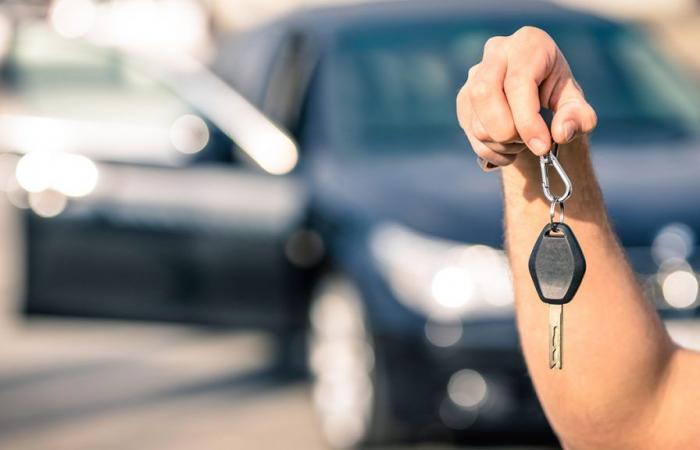UNITED STATES – Car payments have skyrocketed in recent years due to a combination of high prices and high interest rates. While some relief may be coming soon, industry experts say prices could remain high for quite some time.
In May, customers were paying, on average, $760 a month for an auto loan, according to Moody’s Analytics. While that’s a drop from a high of $795 in December 2022, it’s still an increase of about 40% from the average payment of $535 in May 2019.
A near-record 17% of car owners pay more than $1,000 a month, according to Edmunds, a car-buying site and industry data provider. Although slightly lower than the record 17.9% in the fourth quarter of 2023, the rate has remained above 17% for a year.
“The idea that you’re going to pay $700 or $800 a month for the next six years, I mean, sounds crazy for a depreciating asset,” said Charlie Chesbrough, senior economist at Cox Automotive, which owns Autotrader and Kelley Blue Book. , also offers a range of services for the automotive industry.
“SUBMARINE” EXCHANGES ARE INCREASE PAYOUTS
Many customers who purchased vehicles at high prices amid the Covid-19 pandemic are now “underwater” or have negative equity (meaning their car loan is greater than the value of the car) by an amount record. In the first quarter, 23% of trade-in customers had negative equity of more than $6,167 on average, according to Edmunds.
The sharp drop in used car prices from pandemic-era highs has produced unusually high depreciation rates for many vehicles.
It’s not uncommon for car owners to have a bit of negative equity in a vehicle when they trade it in. About a third of exchanges had negative equity before the pandemic. What’s concerning is the amount of negative equity, says Ivan Drury, senior director of Insights at Edmunds.
Trading in a vehicle with negative equity often means the consumer transfers the balance owed to the new auto loan, resulting in higher payments, with higher interest rates, for longer periods.
In the first quarter of 2024, the average trade-in payment was $736, with an average interest rate of 7.1% for 68 months. The rate for a negative equity trade was $887, at a rate of 8.1%, for almost 76 months.
Higher payments for that new car can create a kind of vicious cycle that haunts consumers for much of their lives, Drury said.
“You’re paying for a 10- or 15-year-old car,” Drury said. “You’ve never actually paid for a vehicle. That means you’re constantly paying for something that doesn’t even belong to you anymore.”
WHEN AND HOW CAR BUYERS CAN SEE PRICE RELIEF
The good news for car buyers is that incentives have increased over the past year by 81%, according to Moody’s.
Incentives may vary. There are simple discounts on a car, sometimes called “cash on the hood.” There is an interest rate subsidy, according to which a customer can receive 0% interest for a certain number of months. There are also trade-in assignments, where a dealer might offer an above-market price in a trade-in.
But it’s unclear when the Federal Reserve will lower interest rates, and even when it does, there’s a lag of about six months before those changes are reflected in auto loan rates.
The Federal Reserve does not determine auto loan rates, but it does determine the rate at which banks can borrow federal funds. Because of this, it influences the rates that banks charge customers for loans, including car loans. Additionally, inflation drives up vehicle sticker prices.
“Inflation has remained a little higher and stiffer than we thought,” said Mike Brisson, senior economist at Moody’s. “So, the date scheduled by the Federal Reserve to lower interest or lower the prime rate has been postponed. Manufacturers lower the interest rate artificially using incentives. So you will see some relief there. However, real relief in the real interest rate is not “It will come until after this year.”
However, that relief may be short-lived. Longer-term structural changes in the auto market may keep prices (and payments) high for years to come.
This article was originally published in English by Robert Ferris for our sister network CNBC.com. For more from CNBC go here.





